AMD + ITX + TB3? It's the ASRock X570 Phantom Gaming-ITX/TB3 Motherboard Review
by Gavin Bonshor on October 9, 2019 12:00 PM ESTBIOS
ASRock's firmware is generally consistent with its GUI across its motherboard range and the ASRock X570 Phantom Gaming-ITX/TB3. The X570 Phantom Gaming-ITX/TB3 is using its Phantom Gaming firmware which includes a primarily black background with red gaming themed accents, with white text and grey highlights. Rather than splitting the firmware into two main sections, the firmware on this model has one primary mode. Everything in relation to overclocking, even minor tweaks can be found within the OC Tweaker section.
Upon entering the BIOS for the first time, users will land on the Main section. This is a very minimalistic area which displays very basic information including the version of the firmware that is installed, information on the processor, and the capacity of the memory installed.
All of the boards overclocking related settings are handily located within the OC Tweaker menu. Users can overclock both the processor and memory with a whole range of tweakable and customizable options available. This includes settings like CPU Core Frequency, CPU VCore voltage, and the boards five different LLC profiles. For users looking to make more tweaks to memory rather than just enabling the X.M.P profile, the DRAM Timing Configuration menu allows users to make adjustments to primary, secondary, and tertiary latency timings. Below is a list of limitations when using the current firmware for settings such as CPU VCore, CPU frequency, DRAM frequency, and the Infinity Fabric/FCLK frequency. It should be noted that most of these maximum values won't even be able to be reached, even with extreme cooling methods:
- Maximum CPU Frequency = 6.375 GHz
- Maximum CPU VCore = 2.5 V
- Maximum DRAM Frequency = DDR4-6000
- Maximum Infinity Fabric/FCLK Frequency = 3000 MHz
The ASRock X570 Phantom Gaming-ITX/TB3 has just three 4-pin headers with one for a CPU fan, one for a CPU/Water pump, and for installation of a single chassis fan. As a result, the firmware hasn't got the usual FAN-Tastic tuning utility which we are used to seeing. Instead, users can moderately customize profiles within the H/W Monitor section with temperature and percentage variables. For better control, the ASRock Phantom Gaming utility which comes in the board's software bundle offers fan curve customization.
ASRock has opted to use a very archaic method of customizing its onboard RGB LEDs on the X570 Phantom Gaming-ITX/TB3. Going backwards on the firmware GUI, users can select between 13 different lighting modes, or turn them off completely. Again the software bundle comes to the rescue again with its ASRock Polychrome RGB utility.
I find it difficult saying this but firmware on the ASRock X570 Phantom Gaming-ITX/TB3 is impressive in some areas and completely lacklustre in others. Where we are used to seeing the decent FAN-Tastic fan tuning utility and a somewhat better method of controlling RGB LEDs within the firmware, we feel ASRock hasn't delivered in these areas. For overclockers, there are plenty of options and customizations which go far beyond current capabilities of current processors, and the settings for fine-tuning memory are on point. The only caveat really is for the more novice users looking to make quick and easy alterations, which the X570 Phantom Gaming-ITX/TB3 isn't catered for.
Software
Moving onto the software bundle supplied with the ASRock X570 Phantom Gaming-ITX/TB3, and it's pretty standard to what we've seen from other ASRock motherboards. The highlight of the software is ASRock's Phantom Gaming Utility, while the Live Update and App Shop software is also useful to have. Despite the lack of adequate RGB LED customization within the firmware, the ASRock Polychrome RGB software takes care of that.
ASRock’s Phantom Gaming Tuning software is consistent throughout its range of Phantom Gaming branded models, including across its AMD and Intel chipsets. The only differences from the Intel and AMD sides are the settings available. Users can use Phantom Gaming Tuning to overclock within Windows and tweak settings such as CPU VCore, CPU ratio, CPU cache ratio, and DRAM voltage. One thing users cannot do is customize the memory frequency which will have to be done in the BIOS.
Despite having three 4-pin fan headers available, the ASRock Phantom Gaming Tuning software includes the FAN-Tastic utility within. Users can customize based on fan curves, or with preset profiles such as full-speed, or even allow the software to tune the fans based on current temperatures.
Users can customize the integrated RGB LED strip at the bottom of the board or strips installed into the two headers via the ASRock Polychrome Sync software. The GUI is very user-friendly and ASRock allows you select different types of lighting effects including static, random, wave, and rainbow; there are fourteen different modes not including the ability to switch the RGB LEDs off altogether.
The ASRock App Shop is awash with unsavoury looking gambling apps which have been a mainstay since they released this application, but as it's been combined with the Live Update application too, it does serve a good purpose. Users can download and update the ASRock software applications, as well as keep important drivers up-to-date, as well as update the firmware to the latest version without having to use the tool within the firmware.
Like we have found with the majority of motherboards recently tested, vendors haven't included adequate audio software in with the bundle, or made readily available from the official product pages. The marketing materials for the ASRock X570 Phantom Gaming-ITX/TB3 mentions that it's supported with Creative Sound Blaster Cinema 5, but even adding a simple link for users to download this would make the overall experience better. The software bundled with the board is actually more than some users will need.



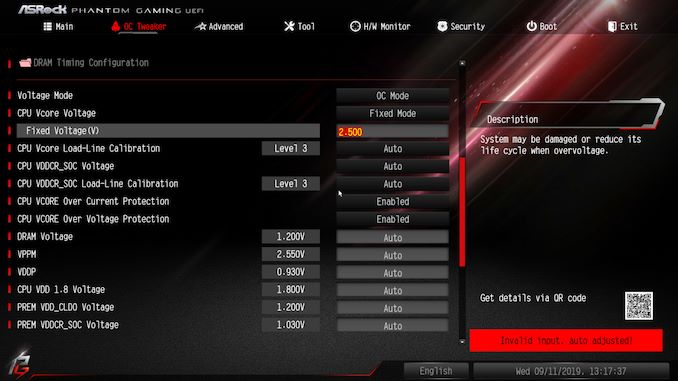
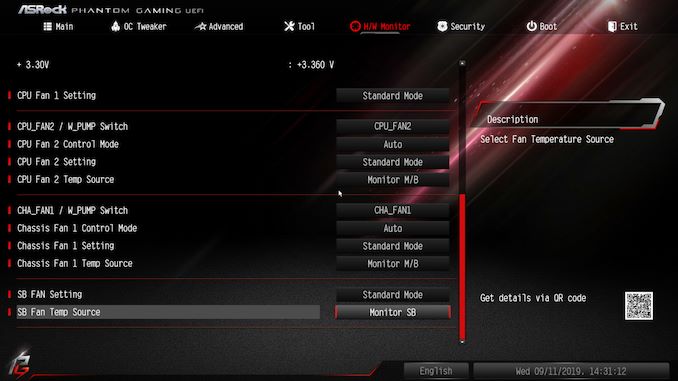
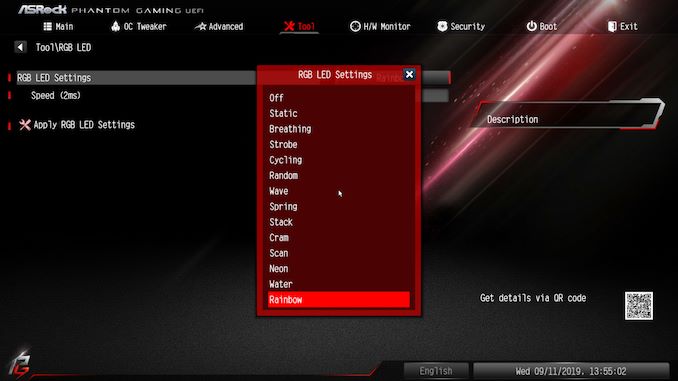






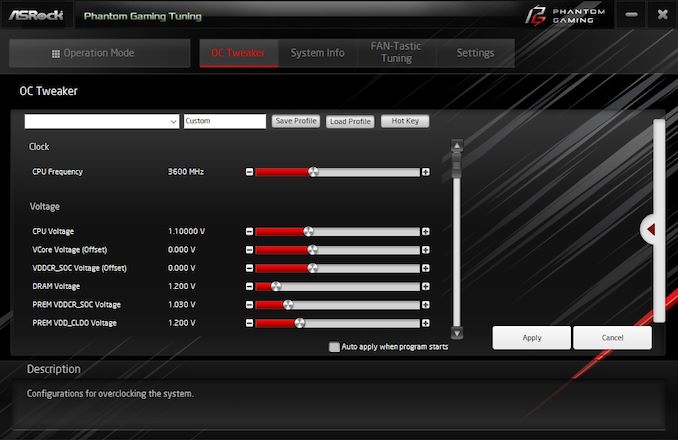
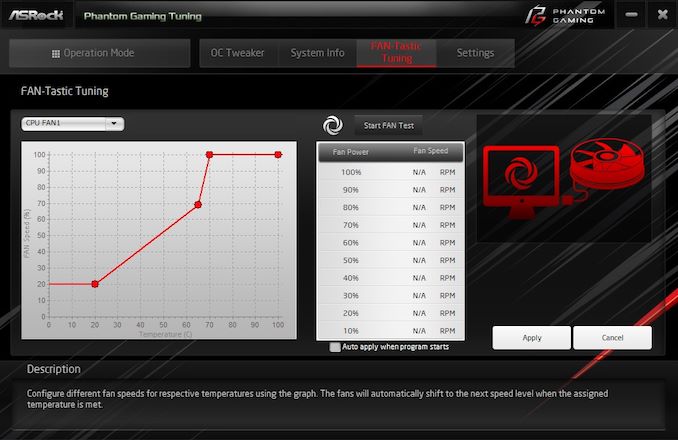

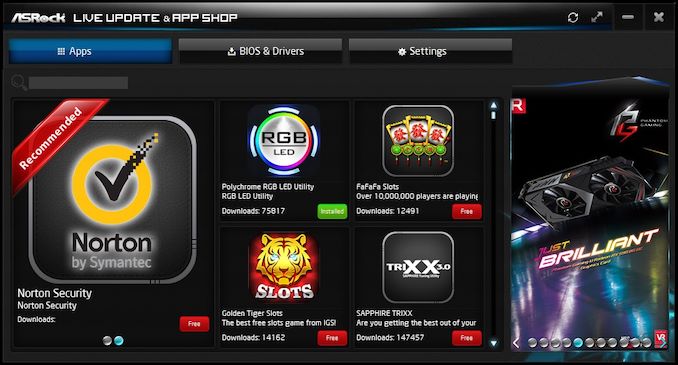














64 Comments
View All Comments
HardwareDufus - Wednesday, October 9, 2019 - link
This board is sooooo close to what I want. However, a 2nd M.2 slot, for a 2nd NVMe drive is necessary. I know it's allot to ask for in an m-ITX board, but it can be done.shabby - Wednesday, October 9, 2019 - link
Next version they add a second nvme slot "oh I wish it had 10gbit lan, almost prefect..."wolrah - Wednesday, October 9, 2019 - link
> Next version they add a second nvme slot "oh I wish it had 10gbit lan, almost prefect..."To be fair, at least something >1gbit *should* have been standard on high-end boards long ago, but for whatever reason no one's integrated it in to a chipset.
Instead we get a compact desktop board that wastes precious space with WiFi. WiFi is for things that move and things that get placed in odd locations where wiring is impractical. Desktop computers are neither of those things. Even if you're one of those screwballs who refuses to plug in a cable or insists on placing your computer in some weird place it's not like WiFi is fast enough that USB would be a bottleneck, so there's no good reason for it to be taking up space on a motherboard.
Hell, actually a M.2 slot would be a win-win there, those who want WiFi can install it instead of a SSD.
DiHydro - Wednesday, October 9, 2019 - link
No, I think he is right. Being able to stick another M.2 drive in there is super helpful, especially as if you leave it open for a cheaper/slower SSD as more of a mass storage option. Personally, I want it for two 2 TB intel drives right off the bat, then I will add another SATA drive if I need it at that point.29a - Thursday, October 10, 2019 - link
just buy a 4 tb samsung29a - Thursday, October 10, 2019 - link
or use sata ssd's for the slower cheap storagewr3zzz - Monday, October 14, 2019 - link
Your obviously have never worked with ITX or even mATX cases. An extra M.2 slot is a godsend vs. the space and cabling headaches of sata drives in SFF.DCide - Wednesday, October 9, 2019 - link
Collectively, these are some of the worst comments I’ve ever seen on AT. This is probably the best mITX motherboard board ever designed - even surpassing ASRock’s excellent X299 boards.16 high-performance cores, nearly 4000 points in Cinebench R15, 64GB of high-speed DD4, 18TB of SSD storage (2TB at 3GB/s and 16TB at 1.5GB/s), 6 USB3 ports (two of them Gen 2), and the first full-speed Thunderbolt 3 ever on an mITX motherboard! In fact, being on AMD, I won’t be shocked if it turns out to run at 40Gbps, rather than the expected 32Gbps (on Intel ATX) or 16Gbps (on Intel mITX).
WiFi is useful on a portable form factor (at minimal expense), while 10GbE generates significant heat and adds nearly $100 to the cost. I think every complaint here can be addressed with proper system design, and Thunderbolt 3 makes all the difference, allowing one to add e.g. 10GbE and USB 3 as needed. In fact, TB3 makes this the first mITX board that can transfer files at 2/3 GB/s (in/out) and operate an eGPU with all 4 PCIe 3.0 lanes!
Ironically, the only significant drawback wasn’t mentioned yet - the lack of an iGPU on Zen 2 (useful e.g. for video encoding) which could free up the PCIe slot/lanes for other uses.
chx1975 - Wednesday, October 9, 2019 - link
The Thunderbolt chip, out of necessity, is the same Intel Titan Ridge you'd find on Intel ATX boards or some laptops. While this motherboard is the first to integrate it, there were reports on various forums of the Gigabyte Titan Ridge card (not the Alpine Ridge) working in AMD motherboards without connecting the special header it has. There is no Titan Ridge LP so the bus speed will be 40gbps and the data speed will be 22gbps. That's the same across all TB3 controllers, except the Alpine Ridge LP where the data speed will be 16gps and the bus speed, I think even after this many years, is simply unknown. 20gbps would make sense but it could be just the 18gbps necessary to run a DisplayPort. But then again, there is no common sense where Intel and Thunderbolt is concerned, noone knows why they gimped the data speed on full speed controllers to 22gbps.DCide - Wednesday, October 9, 2019 - link
No, I agree there’s not much common sense there - even down to questions such as “why is TB3 networking limited to 10Gbps” (and reportedly not even reliable enough for production - I’ve only used it in testing scenarios).I had not heard of the 22gbps data limit, but even if it applies here this motherboard should still be the most flexible and highest performance mITX model available, and (fortunately) could still approach 3GB/s transfer rates.